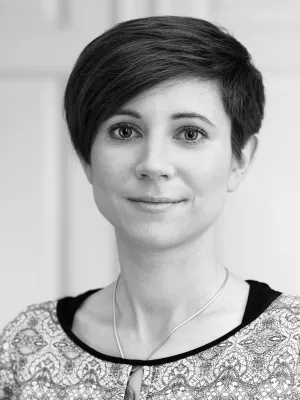
Ruth Pöttgen
Senior Lecturer

Differential tt¯ cross-section measurements using boosted top quarks in the all-hadronic final state with 139 fb−1 of ATLAS data
Author
Summary, in English
Measurements of single-, double-, and triple-differential cross-sections are presented for boosted top-quark pair-production in 13 TeV proton–proton collisions recorded by the ATLAS detector at the LHC. The top quarks are observed through their hadronic decay and reconstructed as large-radius jets with the leading jet having transverse momentum (pT) greater than 500 GeV. The observed data are unfolded to remove detector effects. The particle-level cross-section, multiplied by the tt¯ → WWbb¯ branching fraction and measured in a fiducial phase space defined by requiring the leading and second-leading jets to have pT> 500 GeV and pT> 350 GeV, respectively, is 331 ± 3(stat.) ± 39(syst.) fb. This is approximately 20% lower than the prediction of 398−49+48 fb by Powheg+Pythia 8 with next-to-leading-order (NLO) accuracy but consistent within the theoretical uncertainties. Results are also presented at the parton level, where the effects of top-quark decay, parton showering, and hadronization are removed such that they can be compared with fixed-order next-to-next-to-leading-order (NNLO) calculations. The parton-level cross-section, measured in a fiducial phase space similar to that at particle level, is 1.94 ± 0.02(stat.) ± 0.25(syst.) pb. This agrees with the NNLO prediction of 1.96−0.17+0.02 pb. Reasonable agreement with the differential cross-sections is found for most NLO models, while the NNLO calculations are generally in better agreement with the data. The differential cross-sections are interpreted using a Standard Model effective field-theory formalism and limits are set on Wilson coefficients of several four-fermion operators. [Figure not available: see fulltext.]. © 2023, The Author(s).
Department/s
- Particle and nuclear physics
- eSSENCE: The e-Science Collaboration
Publishing year
2023
Language
English
Publication/Series
Journal of High Energy Physics
Volume
2023
Issue
4
Document type
Journal article
Publisher
Springer
Topic
- Subatomic Physics
Keywords
- Hadron-Hadron Scattering
- Jet Substructure and Boosted Jets
- Top Physics
Status
Published
ISBN/ISSN/Other
- ISSN: 1029-8479

